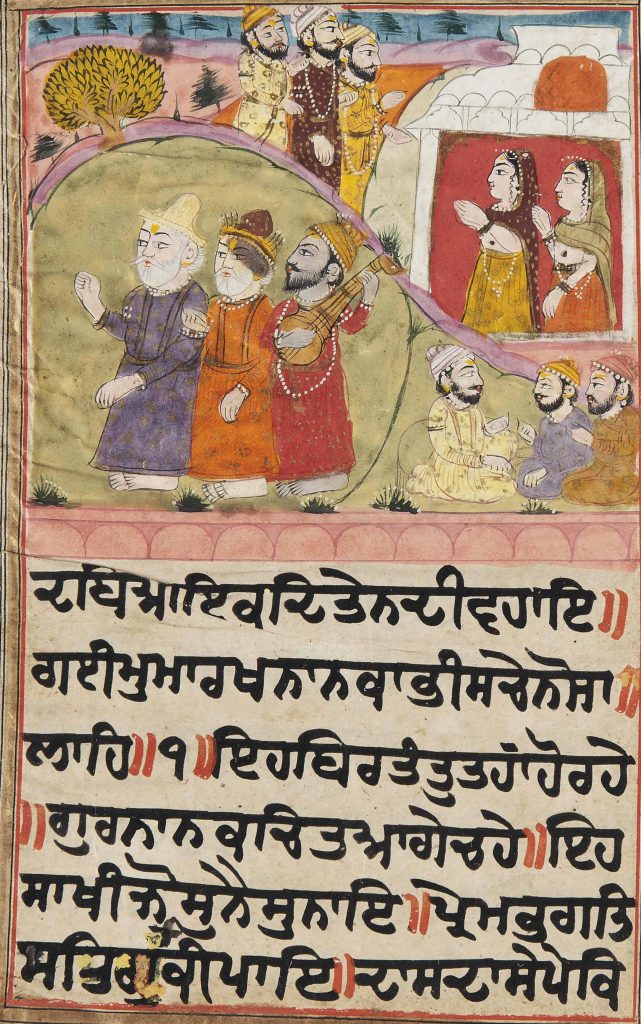ADHARKA, according to Bhai Bala Janam Sakhi, visited Guru Nanak in the train of his master, Salas Rai, the jeweller. Both master and servant turned disciples and set up a Sikh sangat, fellowship or centre, in their native town, Bishambharpur.
Discover the inspiring story of Ishar Singh Granthi, a devoted Sikh martyr and teacher from Amritsar committed to preserving Sikh heritage.
Discover the rich prose and poetry of Meharban in Janam Sakhi. A precious reflection of 17th-century Sikh literature.
Explore the life of Mata Tripta, mother of Guru Nanak, and her impact on Sikh history. Learn about her journey through key historical texts.
ADI SAKHIAN (adi = first; sakhian, plural of sakhi = anecdotes, stories, discourses, parables) is one of the early compilations but not the first of the extant janam sakhi traditions to evolve. The manuscript, dated 1758 Bk/ AD 1701, and copied by Shambhu Nath Brahman was first located by Dr Mohan Singh Diwana. While teaching at Panjab University, Lahore, prior to the partition of India in 1947, Mohan Singh Diwana discovered in the University`s library a janam sakhi manuscript which differed from other extant Janam sakhis and bore an earlier date. Dr Diwana believed it to be a version of the earliest of all janam sakhi traditions and bestowed on it the name Adi Sakhian.
Delve into the rare anecdotes of Guru Nanak's life in the B40 Janam Sakhi manuscript with unique narratives and 57 illustrations.
Explore the life of Guru Nanak in this vivid verse account, symbolizing a rising sun dispelling darkness in kaliyug. A timeless read of 1849.
Explore the spiritual journey of Ubare Khan, a Pathan devotee of Guru Nanak from Jaurian village, obtaining spiritual insight through devotion.
Uncover the secretive Aghori sect of Saivism, linked to Kapalika traditions and known for extreme rituals and spiritual beliefs.
Dive into the life stories and teachings of Guru Nanak through traditional Janam Sakhi narratives. Discover the evolution of these sacred accounts.




